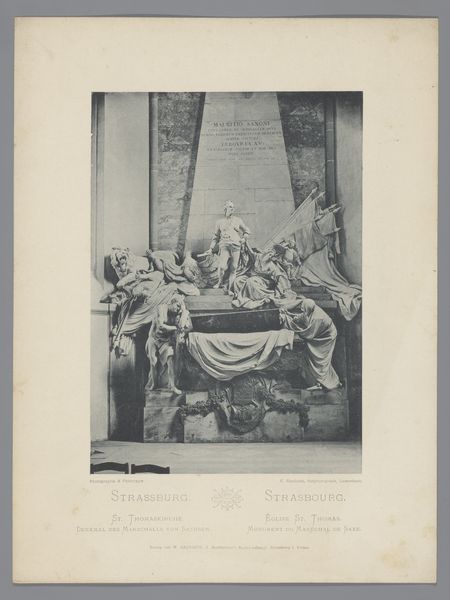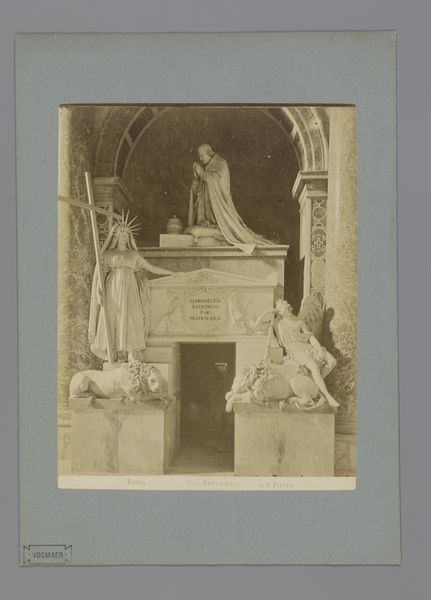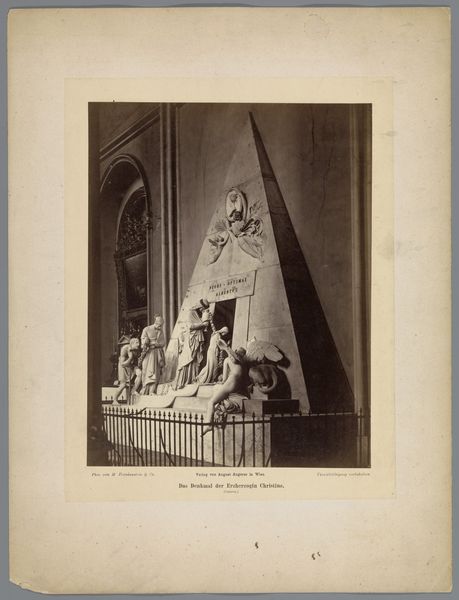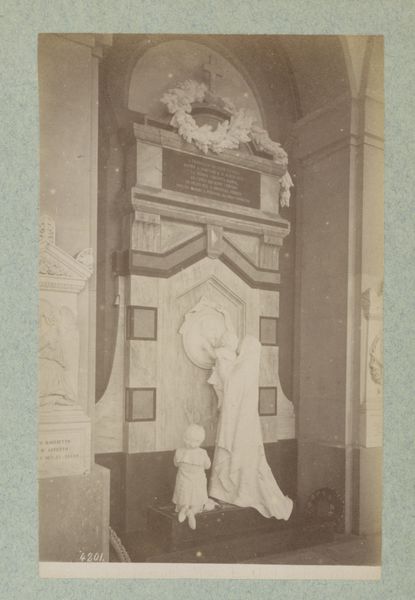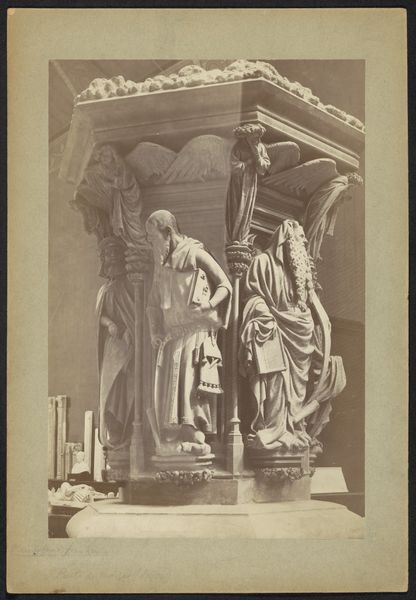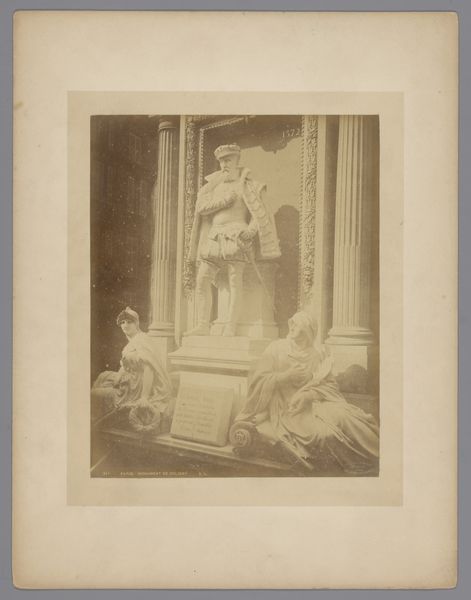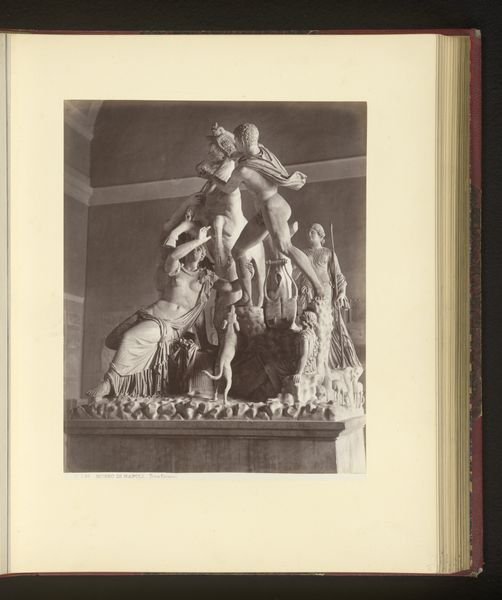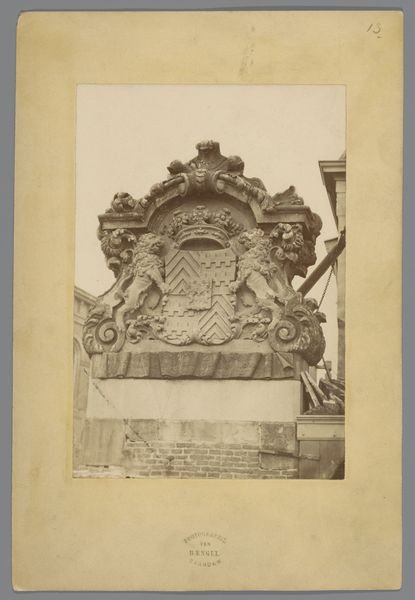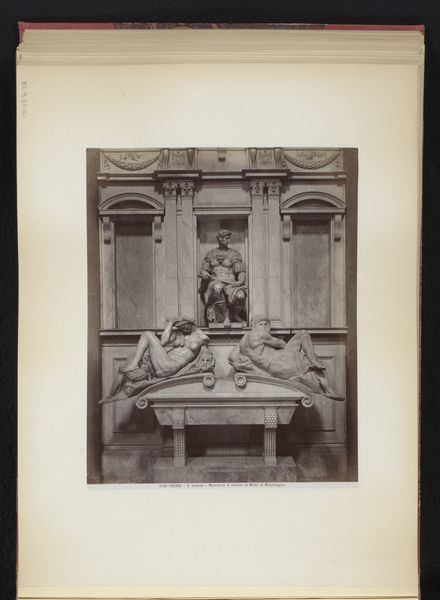
Dimensions: height 105 mm, width 62 mm
Copyright: Rijks Museum: Open Domain
Curator: This is a photograph entitled "Grafmonument van Maurits van Saksen in Straatsburg", placing it in Strasbourg, and it dates to sometime between 1855 and 1885. It’s a gelatin-silver print. Editor: It's stark, even in this subdued rendering. The texture of the stone and fabric give a powerful weight to the memorial. I'm struck by the materiality immediately; the cool detachment implied by marble. Curator: It presents us with a history painting in photographic form, quite literally, immortalizing the memorial of Maurice de Saxe. The monument, completed in the late 18th century, embodies neoclassical ideals, and the photograph then captures it at another moment in time. There's a double layering of historical representation going on here. Editor: Look at the draping, though, those expressive gestures; and also at the very human detail in the right corner: a visitor admiring this display, which invites me to consider the social dimension of memory embedded in these artifacts. It forces me to think: Who built it and with what methods? Curator: Exactly. This monument, of course, wasn’t made in a vacuum. It speaks of power, and its legacy continues to resonate today through complex sociopolitical lenses, intersecting ideas of French identity and cultural dominance. Editor: And that power manifests not only in its scale, but also in its deliberate construction – in the quarrying, carving, and placing. Think about all of labor concentrated there, all those hours spent making that mass... Curator: Indeed. When we reflect on monuments, we must remember to interrogate the narratives that they enforce. How does it relate to larger themes of colonialism and commemoration? The question being asked through this photographic depiction of it: which histories deserve such prominent display? Editor: Ultimately, analyzing it closely, physically, reveals its symbolic density and intricate connections between aesthetics, craft, labor, and remembrance in this striking piece of photography. Curator: I find that these visual and historical layers complicate notions of authenticity and allow us to interrogate what truly lives on, whether it is an intended glorification or an accidental memorialization in a photographic artifact that persists across centuries.
Comments
No comments
Be the first to comment and join the conversation on the ultimate creative platform.
